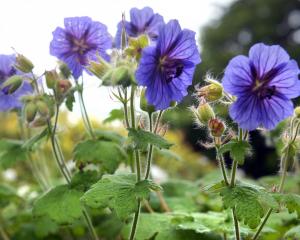
Cranberries are seldom eaten raw and often used as a sauce over the Thanksgiving or Christmas turkey. Similar in name but quite different is what we call the New Zealand cranberry or Chilean guava, Ugni molinae. The Ugni has small dusky red berries that are edible raw. Both the flower and the fruit are highly perfumed which you smell long before seeing them.
Outside Europe, the medlar, Mespilus germanica is the least commonly grown fruit tree of the rose family Rosaceae e.g., apple, pear, quince. The medlar grows to form a curious twisted tree producing fruit not much bigger than a golf ball covered with a fuzzy brown surface. The fruit is only ready when it is over-ripe.
The Oriental persimmon, Diospyros kaki with its twisted trunk and hanging branches is a personal favourite. The leaves give a magnificent show in the autumn, going orange, scarlet, even imperial purple. It has tomato-size, orange fruit that hang like glow lamps well after the leaves have fallen. The fruit does need to be squashy ripe before eating, otherwise they will be very astringent.
Just a small example of the many edible plants growing at the Botanic Garden. Pick up an Edible Plants brochure and go for a walk
Garden Life is produced by Dunedin Botanic Garden
For further information contact David Askin











